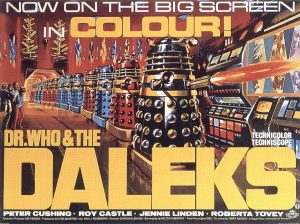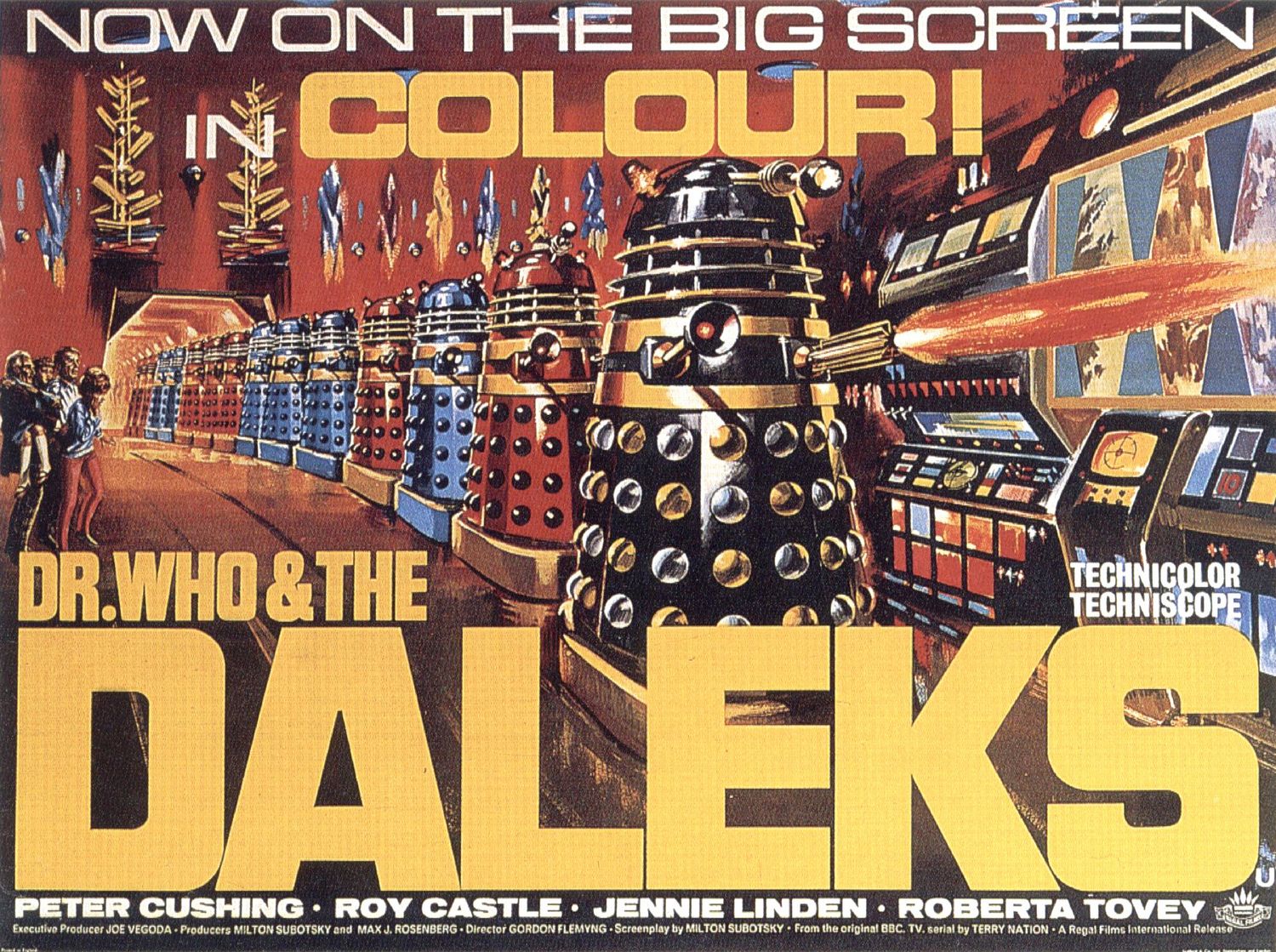
o followers of the original TV series, this plot will be as familiar as the Daleks’ squawking cries of ‘Exterminate,’ and despite some changes to the cast (most notably the Doctor being portrayed as a human), it faithfully captures the spirit of the early programs. For viewers who’ve never experienced the original Who, or who don’t have a taste for early pulp-style adventure sci-fi, this movie will probably be less appealing. It’s a fan flick pure and simple, expressly designed to capitalize on the wave of Dalekmania that swept Britain in the mid-1960s following the show’s BBC premiere.
Ironically, the film’s weakest link is the Daleks themselves. The writers and producers were no doubt keen to capitalize on the popularity of the metal meanies, but it has to be said that the Daleks really don’t have much of a screen presence. With their absolute lack of expression, clumsy movement, and painfully slow, mechanical, grating voices, they should never have been scripted to carry any scenes by themselves; however (alas) there are more than a few passages in the film that consist of nothing more than Dalek cross-talk acts, with one metal peppergrinder haltingly rasping its lines to another. Still, I’m one who’s been spoiled by the routinely mind-blowing special effects of the 21st century; to Britons of the ’60s, the stuff I find boring might have seemed menacing.
Daleks aside, the most memorable aspect of the film is the eye-popping color. The filmmakers pulled out all the stops to give the sets a wonderfully vibrant feel, liberally filling every scene with multi-hued Daleks, glowing control panels, or eerily-lit alien landscapes. This film was the first opportunity for fans to see Doctor Who in color (sorry, `colour’), and they certainly got it in spades. (The original TV series didn’t drop the black-and-white format until 1970, five years later.)
The film’s greatest strength is its casting, with the best performance by far coming from veteran actor Peter Cushing, best known to U.S. audiences as Grand Moff Tarkin in Star Wars. Cushing’s delivery is predictably brilliant, and helps bring conviction and flair to a script that might otherwise come off as unbearably campy. As the Doctor he’s also just plain likeable – much more so in fact than his TV counterpart (played by William Hartnell) who often came off as crusty and gruff. Roberta Tovey as the young Susan also gives a marvelous performance, something that’s a true rarity among kid actors. Jennie Linden does an adequate job as Barbara, though her character has no clear role in the story and was probably just included to suggest continuity with the TV series, while Roy Castle provides some (generally successful) comic relief with his portrayal of the bumbling klutz Ian. Kudos also to Barrie Ingham (Thal leader Alydon) for actually giving a credible performance from beneath false eyelashes and a blonde wig.

